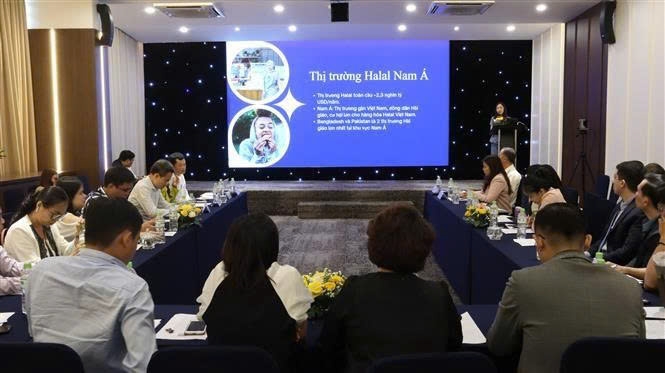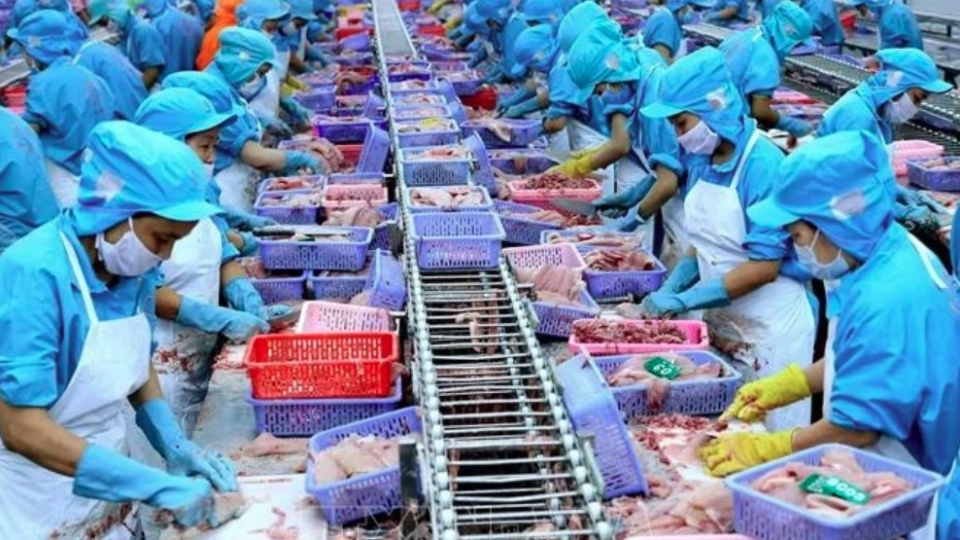Vietnam eyes opportunities to expand exports to Halal markets
The global Halal market, catering to Muslim consumers, presents significant export opportunities for Vietnamese businesses, particularly in sectors such as agriculture, food, cosmetics, textiles, and pharmaceuticals.

However, tapping into this lucrative market requires deep understanding of Halal standards, consumer habits, and trading practices, experts said at a seminar held on July 14 in Ho Chi Minh City.
Co-hosted by the the Ho Chi Minh City Centre of International Integration Support (CIIS) under the Ho Chi Minh City Institute for Development Studies and the Department of Overseas Markets under the Ministry of Industry and Trade (MoIT), the seminar discussed opportunities and challenges in Halal markets in the Gulf Cooperation Council (GCC).
Speaking at the event, Do Quoc Hung, Deputy Director of the Department of Overseas Markets, highlighted the growing importance of Halal markets in the context of Vietnam’s market diversification strategy. Globally, the Halal industry is worth trillions of USD annually, serving over 2 billion consumers, approximately 25% of the world’s population.
The GCC comprising Saudi Arabia, the UAE, Qatar, Kuwait, Bahrain, and Oman is considered a hub in the global Halal supply chain. With high per capita incomes and a heavy reliance on imported goods including food, cosmetics, and medicines, the region offers vast opportunities for Vietnamese exporters.
In 2024, Vietnam–GCC bilateral trade reached US$18 billion, with Vietnamese exports accounting for US$7.5 billion. This shows that Vietnam's export growth potential is still very large, especially when the Vietnam-UAE Comprehensive Economic Partnership Agreement (CEPA) will take effect in the coming time.
Meanwhile, South Asia, home to approximately 600 million Muslims, also presents a promising Halal market. Key export destinations include Pakistan and Bangladesh. However, Vietnamese firms must meet rigorous Halal certification requirements and overcome cultural, religious, and technical barriers to access these markets.
Nguyen Minh Phuong, head of the West Asia–Africa Division at the MoIT, noted that the GCC has the population of around 60 million and annual incomes ranging from US$40,000 to US$80,000 per capita. Its domestic production is limited while consumer demand is high, with 90% of food being imported.
She said that with high income, consumers in the GCC region tend to choose high-quality branding products and pricing is not a big matter to them. Popular product categories include processed foods, seafood, instant noodles, rice, coffee, natural cosmetics, eco-friendly textiles, and household Halal goods.
She added that aside from local consumers, the GCC also hosts large South and Southeast Asian immigrant communities with consumption habits similar to Vietnamese people, which is a valuable advantage for local businesses.
Vietnam’s geographical location, she stressed, provides a strategic edge in accessing Halal markets in the UAE, Malaysia, and Indonesia. Several Vietnamese companies have successfully entered the Halal market, including Vinh Hoan Corp., Cau Tre Export Goods Processing JSC, and Trung Nguyen Coffee.
Despite its potential, the Halal market comes with specific challenges. Phuong emphasised the lack of a unified Halal certification system, with each country operating its own authority. Complicated customs procedures and slow payment methods also hinder market entry.
In South Asia, Halal food spending is estimated at US$70–100 billion annually, said Le Thi Mai Anh, head of the Southeast Asia–South Asia and Regional Cooperation Division at the MoIT.
She said that consumer trends are shifting toward processed foods, cosmetics, and health supplements. Rising young middle-class populations are driving consumption growth of 5–7% annually.
South Asian consumers are price-sensitive but prefer organic products with small packaging, and increasingly shop online. In addition to food and cosmetics, demand is rising for light industrial inputs such as textiles and fragrances.
To succeed in Halal markets, experts advise Vietnamese exporters to focus on their niche strengths, comply strictly with Halal standards, leverage trade promotion networks, and build partnerships with local distributors.
Nguyen Thi Ngoc Hang, Marketing Director at Halal Certification Authority (HCA Vietnam), said Halal certification covers the entire supply chain from raw materials to production, transport, and storage, not just the final product. Certification is granted for individual products, not entire companies or categories, requiring businesses to adopt clear, long-term strategies.
If Vietnamese businesses can meet Halal requirements, they won’t just reach Muslim consumers, she said, adding that they’ll also tap into the high-end segment in global markets increasingly focused on quality and product safety.



